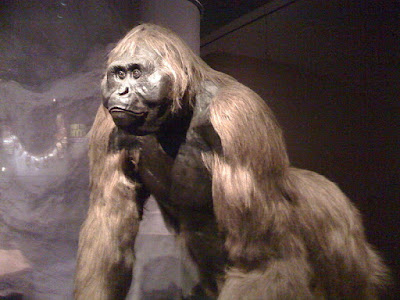
Gigantopithecus (in Greek, gigantas or γίγαντας meaning "giant" and pithecus or πίθηκος meaning "ape") blackii was the largest primate to ever have had its fossil records found and stood approximately ten feet tall and weighed as much as 1,200 pounds. G blackii are believed to have had massive appetites, but were herbivores, eating mainly bamboo and lived alongside humans in southeast Asia, particularly in China, India, and Vietnam. The giant primate had roamed the Earth for almost a million years before it became extinct about 100,000 years ago during the Pleistocene epoch.
"This is a primate that co-existed with humans at a time when humans were undergoing a major evolutionary change. Guangxi province in southern China, where the Gigantopithecus fossils were found, is the same region where some believe the modern human race originated," Jack Rink, a professor of geography and earth sciences at of McMaster University in Hamilton, Ontario explained.
Rink continued: "Originally the ape was thought to have been on the ancestral human line, but that has been shown to be not true... Probably the creatures lived up in the caves and up in the bamboo forests, while people were living lower in the river valleys. But it's quite likely that humans came face to face with the ape."
The only known fossils of G. blacki that have been found so far are a few teeth and mandibles found in cave sites in Southeast Asia. As the name suggests, these are appreciably larger than those of living gorillas, but the exact size and structure of the rest of the body can only be estimated in the absence of additional findings.

No comments:
Post a Comment